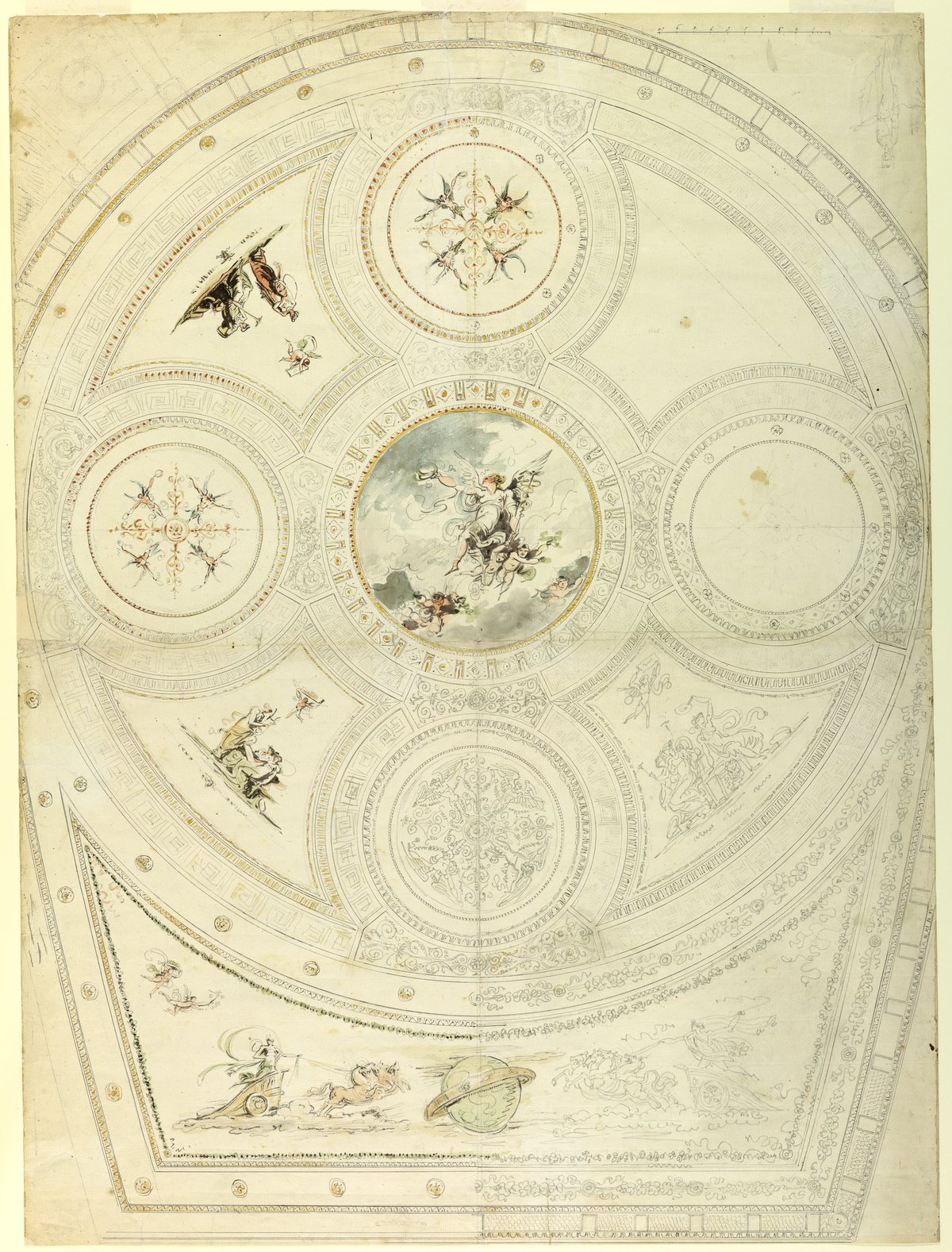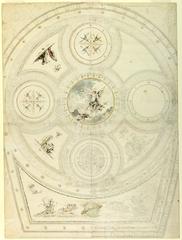
Teatro Valle Rome: Visiting Hours, Tickets, and Historical Significance
Date: 14/06/2025
Introduction
In the heart of Rome, just steps from Piazza Navona, stands the storied Teatro Valle—Italy’s oldest surviving theater and a living testament to centuries of artistic innovation. Established in 1726 by the Capranica family and designed by Tommaso Morelli, Teatro Valle has shaped Rome’s cultural landscape through its premier performances, architectural grandeur, and pivotal role in civic movements. Its legacy encompasses illustrious premieres, grassroots activism against privatization, and a vibrant present as it prepares to reopen in 2025 under the Teatro di Roma foundation. This guide provides essential information on visiting hours, ticketing, accessibility, and the theater’s cultural significance, ensuring you experience one of Rome’s most treasured landmarks to the fullest (Patterns of Commoning; Wanted in Rome; Turismo Roma).
Table of Contents
- Introduction
- Historical Overview
- Architecture and Artistic Heritage
- Visiting Information
- Programming and Events
- Visitor Experience and Tips
- FAQs
- Visual Highlights
- References
Historical Overview
Founding and Early Years
Teatro Valle was commissioned by the Capranica family and opened in 1726, quickly becoming a focal point for Rome’s artistic life (Patterns of Commoning). Its elegant horseshoe-shaped auditorium and ornate boxes reflected the grandeur of 18th-century Italian theater. The venue soon gained renown for hosting premieres by composers such as Gioachino Rossini and Gaetano Donizetti, and became a center for both opera and prose performances.
Twentieth Century Developments
During the 20th century, Teatro Valle was at the forefront of Italian drama and opera, closely associated with the works of Luigi Pirandello and other luminaries. The theater’s programming expanded to include avant-garde and experimental productions, embracing both tradition and innovation. For much of this period, the Ente Teatrale Italiano (ETI) managed the venue, ensuring its preservation and continued public access (Patterns of Commoning).
The Commons Movement (2011–2014)
A defining chapter unfolded after the ETI’s closure in 2010, when the city considered privatizing the theater. In response, artists and citizens occupied Teatro Valle in 2011, seeking to preserve it as a “commons” managed for public benefit. The occupation lasted three years and transformed the theater into a laboratory for democratic governance and cultural production. The movement inspired national debates on the management of cultural heritage and the concept of cultural commons (Patterns of Commoning; HowlRound).
Restoration and Reopening
After the occupation, the city undertook a comprehensive €6.7 million restoration, preserving historical features while upgrading safety, comfort, and accessibility (Wanted in Rome). Reopening in 2025 under the Teatro di Roma foundation, the theater will offer a dynamic program of performances and events, reaffirming its role as a public institution dedicated to cultural innovation (Turismo Roma).
Architecture and Artistic Heritage
Teatro Valle’s neoclassical façade and richly decorated auditorium are emblematic of 18th-century Italian theater design. The interior, restored to seat approximately 700 spectators, features five tiers of boxes, a frescoed ceiling, and a grand proscenium arch. Subsequent renovations by architects like Giuseppe Valadier and Antonio Salvi introduced neoclassical refinements and enhanced acoustics. The theater’s intimate scale and historic machinery offer visitors a glimpse into the evolution of Italian stagecraft (Turismo Roma).
Visiting Information
Hours, Tickets, and Accessibility
Visiting Hours:
Upon its reopening in 2025, Teatro Valle will operate primarily for evening performances, with occasional matinees, guided tours, and special events. Exact hours will be published on the Teatro di Roma official website.
Tickets:
Tickets (typically €10–€40) will be available online and at the box office, with discounts for students, seniors, and groups. Advance booking is advised, especially during the 2025 Jubilee Year (Lonely Planet).
Accessibility:
The restoration ensures step-free access, elevators, and designated seating for visitors with disabilities. Contact the theater in advance to arrange specific assistance.
How to Get There & Nearby Attractions
Address: Via del Teatro Valle, 21, 00186 Roma RM, Italy
- Metro: Barberini (Line A) or Spagna (Line A), both within a 15-minute walk.
- Bus: Several lines run along Corso Vittorio Emanuele II.
- On Foot: Walking distance from the Pantheon, Piazza Navona, and Campo de’ Fiori (GPSmyCity).
Nearby Attractions:
- Pantheon: Iconic ancient Roman temple.
- Piazza Navona: Baroque art and vibrant atmosphere.
- Campo de’ Fiori: Bustling market and nightlife.
- Jewish Ghetto: Historic district with rich culinary traditions (Savoring Italy).
Programming and Events
Teatro Valle’s 2025 season will feature a blend of opera, classical theater, contemporary drama, dance, and interdisciplinary projects. Special programming will coincide with Rome’s Jubilee Year celebrations, including artist residencies and educational workshops (Italy Tourist Information).
Visitor Experience and Tips
- Arrive Early: Plan to arrive 30 minutes before showtime.
- Dress Code: Smart-casual recommended, especially for evening events.
- Language: Most performances are in Italian; check for surtitles or English summaries.
- Photography: Not permitted during performances, but allowed in public spaces before or after shows.
- Refreshments: On-site café/bar available.
Frequently Asked Questions (FAQ)
Q: What are Teatro Valle’s visiting hours?
A: Visiting and performance hours will be posted on the official Teatro di Roma website. Guided tours will be available on select days.
Q: How can I buy tickets?
A: Tickets are available online and at the box office. Early booking is recommended for popular events.
Q: Is Teatro Valle wheelchair accessible?
A: Yes, the venue features step-free access, elevators, and designated accessible seating.
Q: Are guided tours offered?
A: Guided tours will be offered; details will be updated on the official website.
Q: Can I take photos inside the theater?
A: Photography is allowed in non-performance areas, except during performances.
Visual Highlights
The elegant façade of Teatro Valle, a landmark in Rome’s historic center.
The beautifully preserved horseshoe-shaped auditorium with ornate boxes.
For a virtual experience, explore the Teatro di Roma virtual tour.
Recommendations for Visitors
- Check the Official Website: For the latest hours, ticketing, and event information, visit the Teatro di Roma official website.
- Plan Ahead: Book tickets and accommodations early, especially during the Jubilee Year (Full Suitcase).
- Combine Your Visit: Take a cultural stroll to nearby landmarks, enjoy local cuisine, and discover Rome’s unique neighborhoods.
Summary
Teatro Valle is a living monument to Rome’s artistic heritage, blending three centuries of theatrical tradition, civic activism, and architectural splendor. Its journey from 18th-century playhouse to a symbol of the cultural commons reflects Rome’s evolving identity, and its 2025 reopening marks a new era of inclusive programming and community engagement. Whether you are a history enthusiast, theater lover, or cultural traveler, a visit to Teatro Valle offers a rich and inspiring window into the heart of Rome (Wanted in Rome; Patterns of Commoning; Turismo Roma).
References
- Patterns of Commoning
- Wanted in Rome
- Wanted in Rome: Best Things to Do in Rome in June
- Turismo Roma: Teatro Valle Franca Valeri
- HowlRound: Commoners Occupy Teatro Valle Rome
- Italy Tourist Information
- Lonely Planet
- Savoring Italy
- GPSmyCity
- Full Suitcase
- Rome Actually


















































































































































































































































